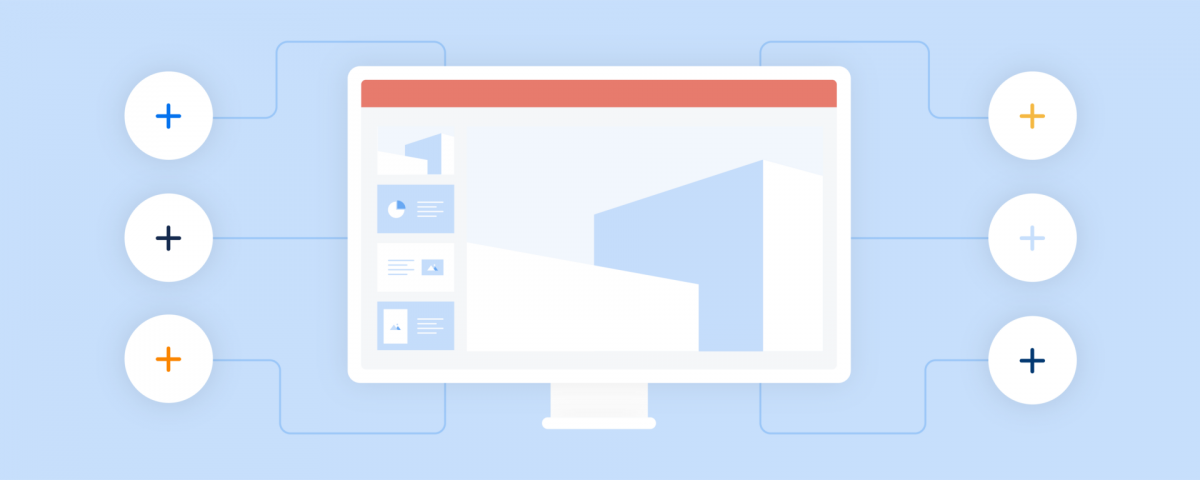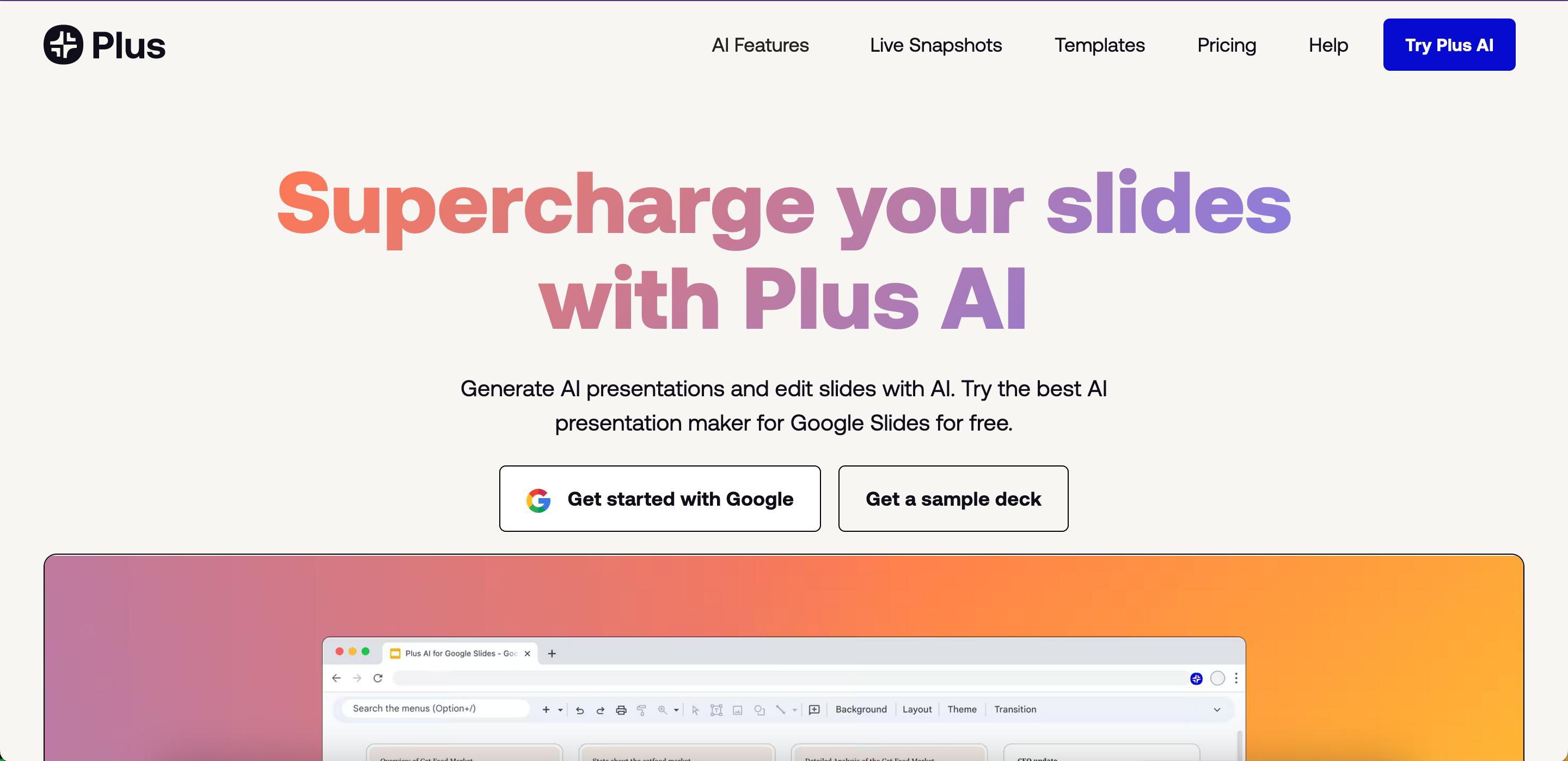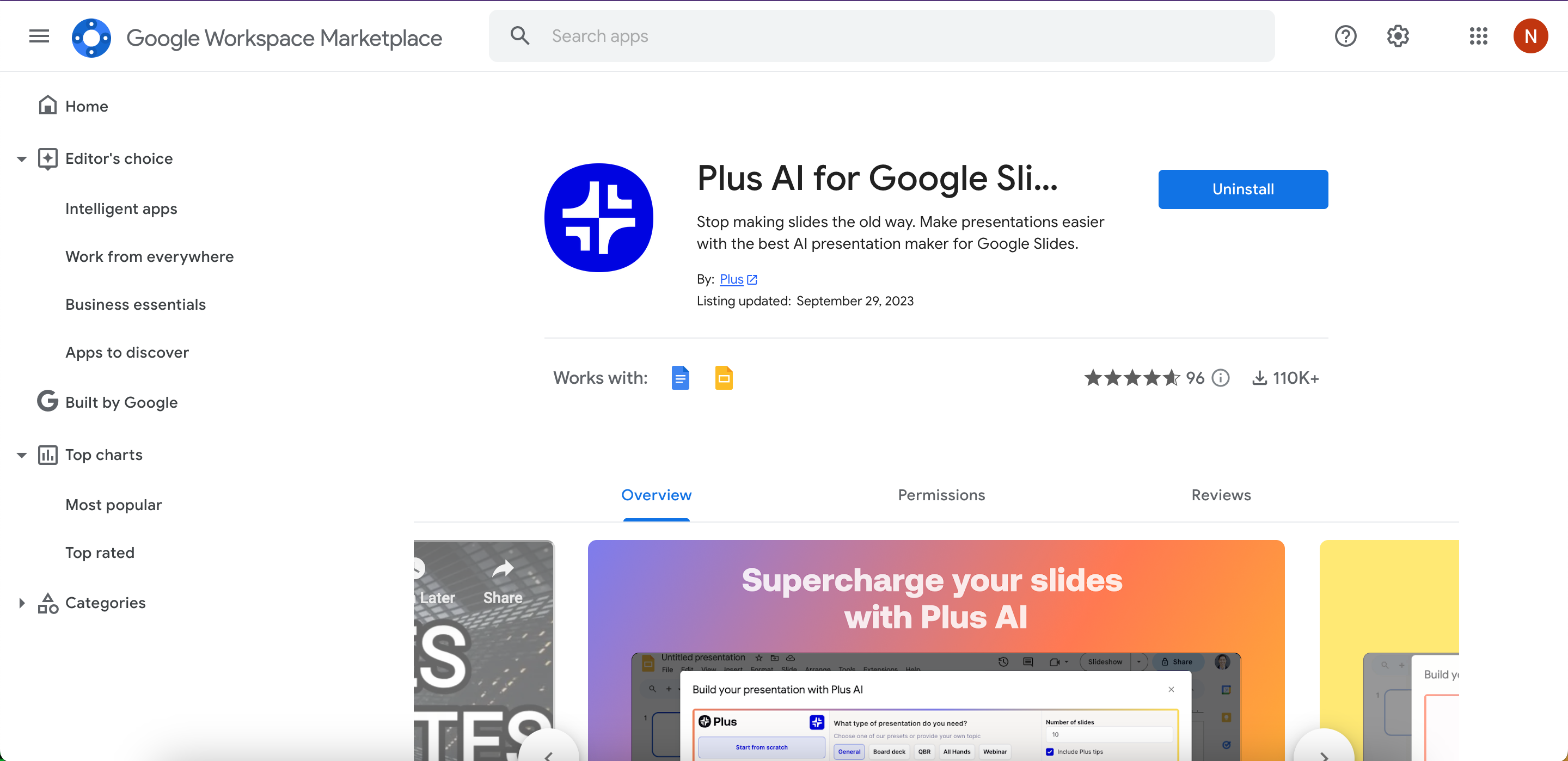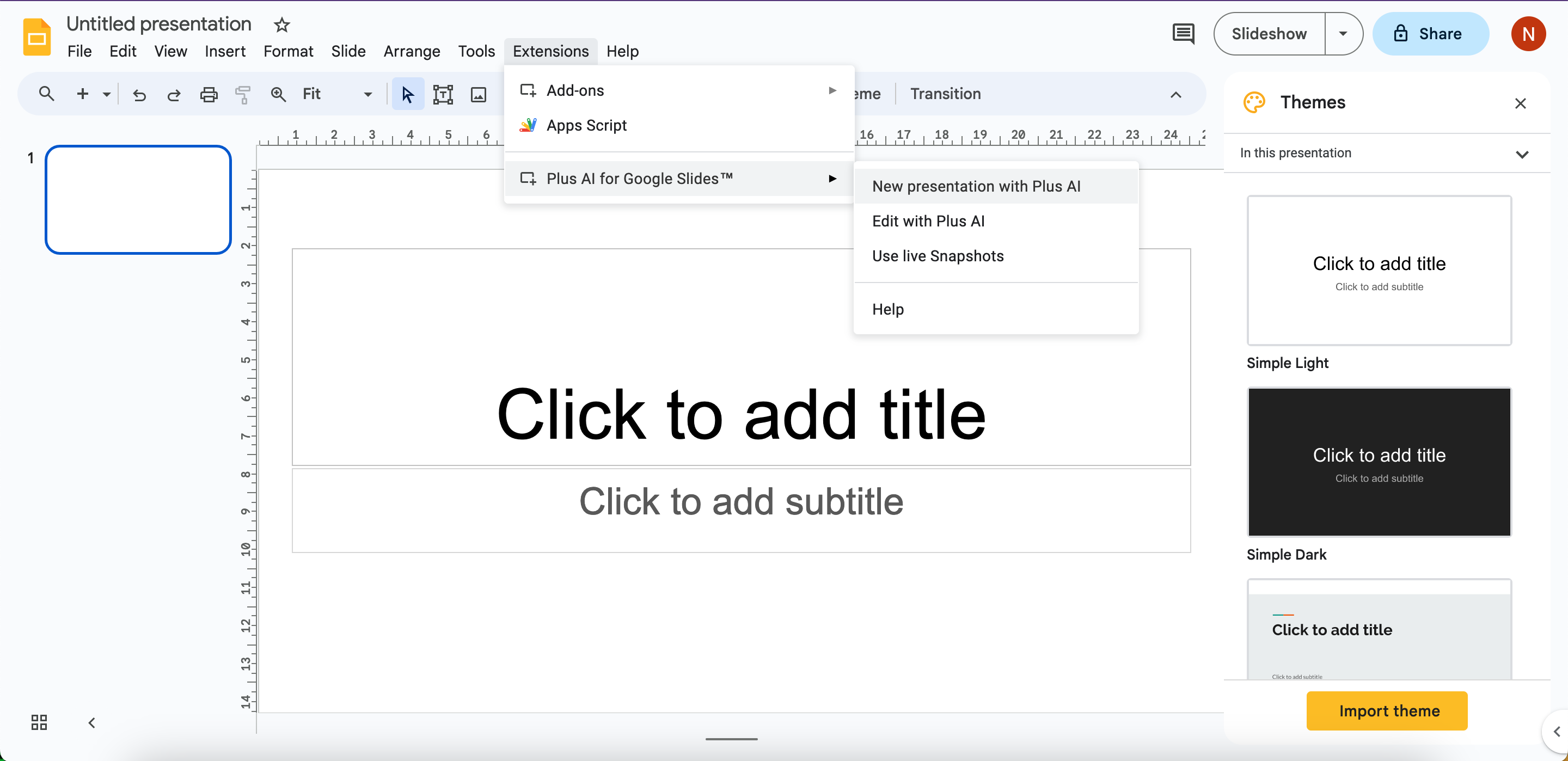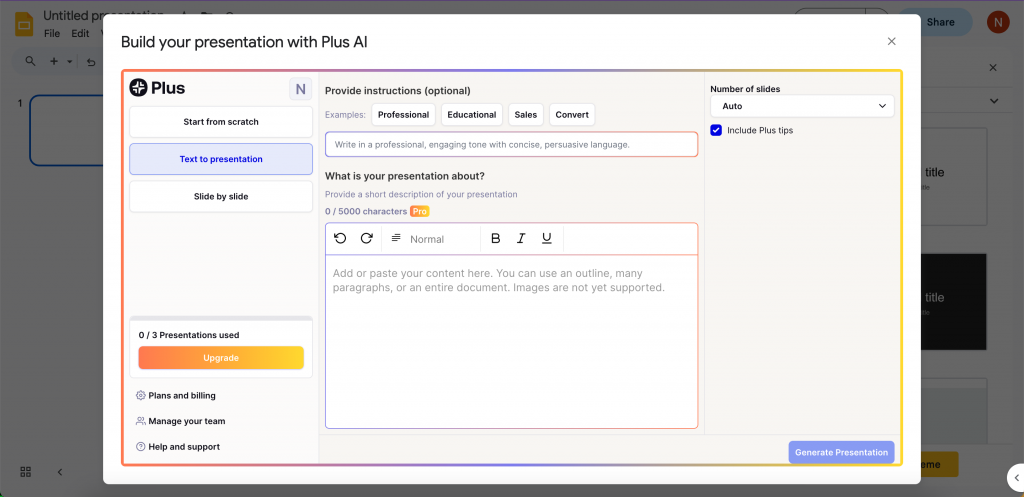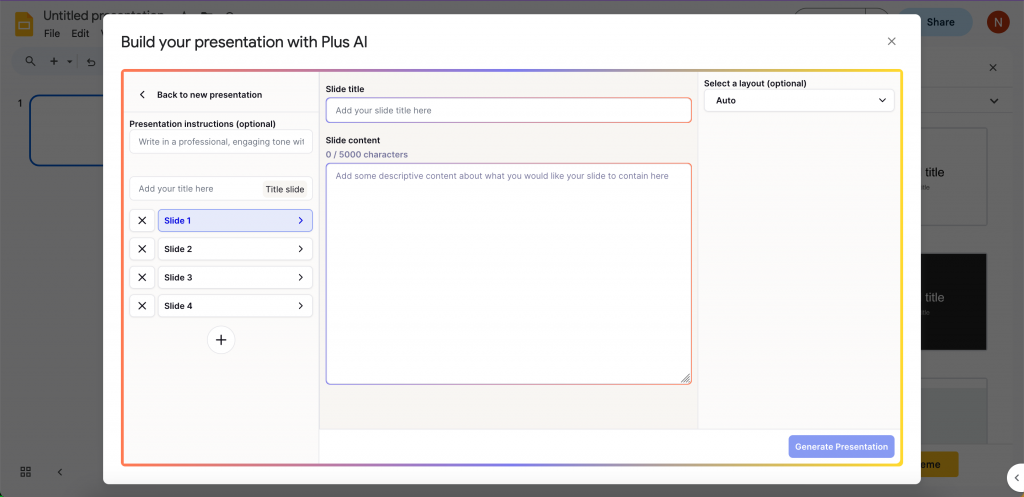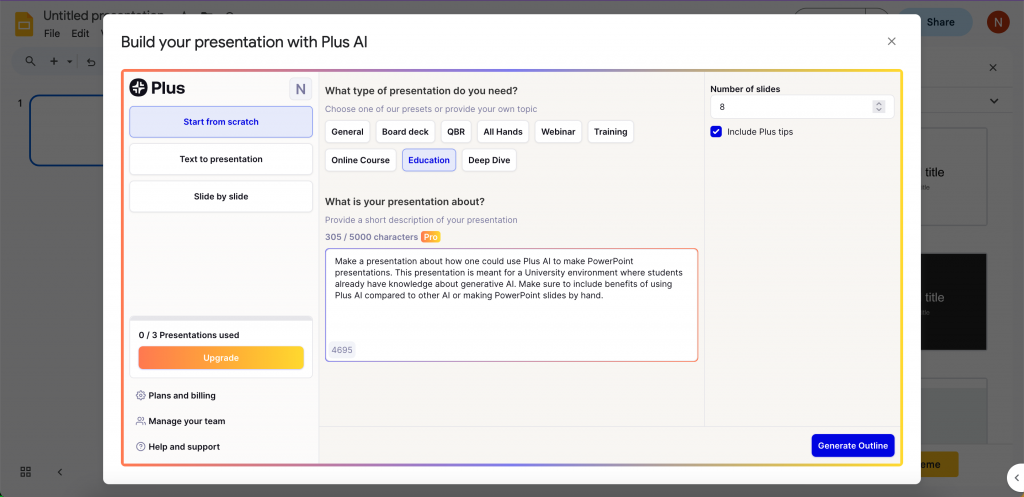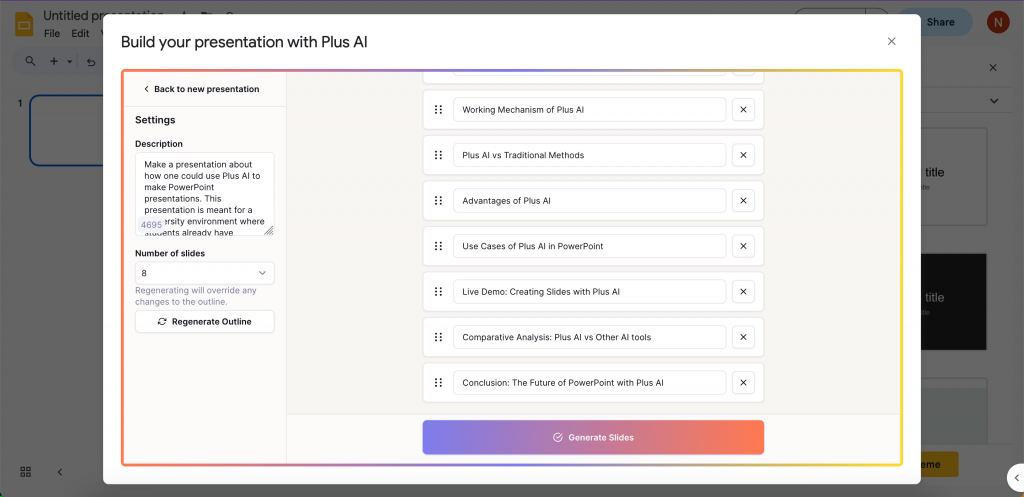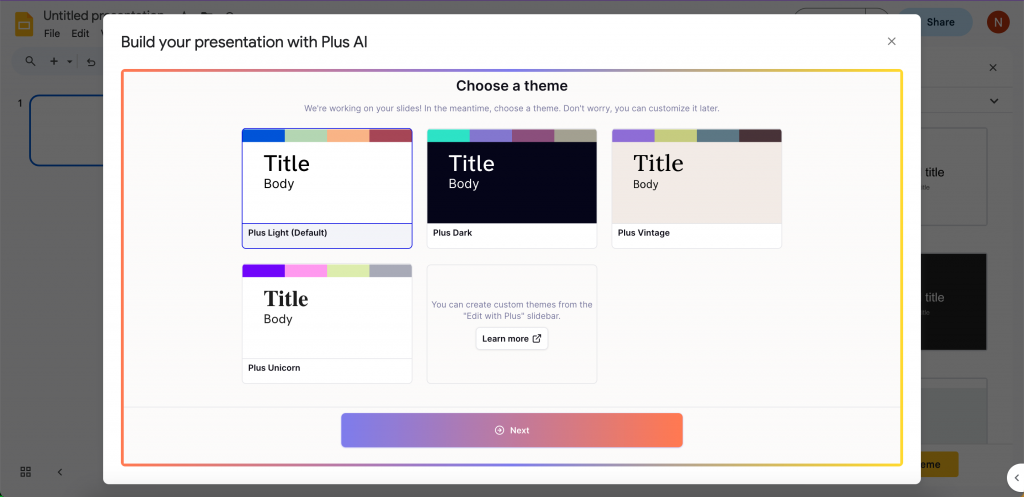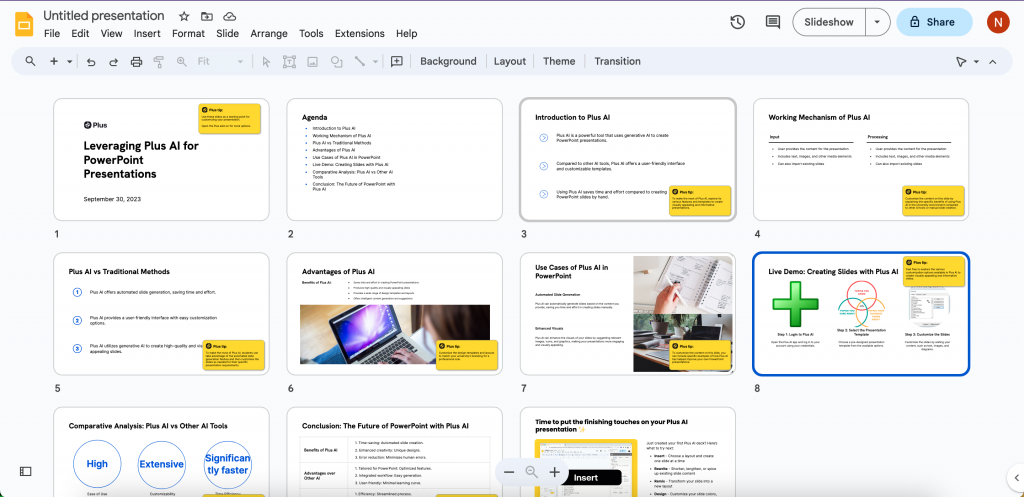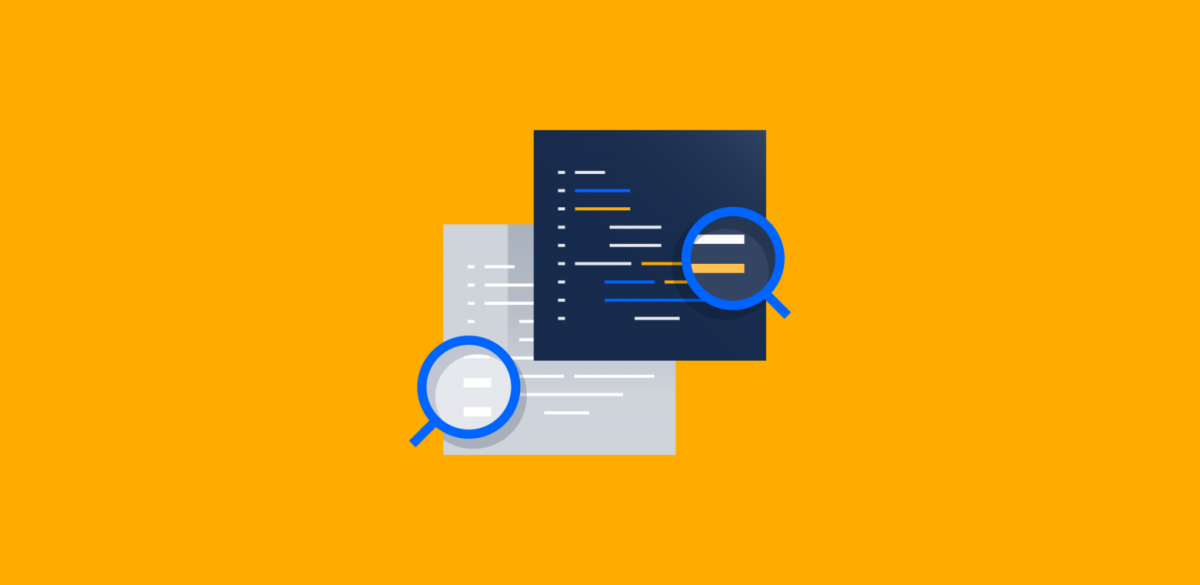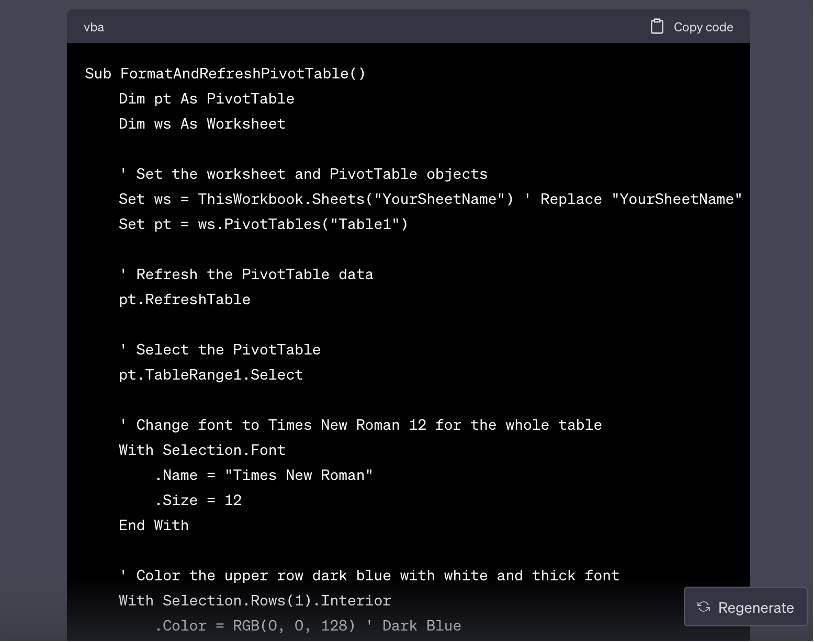A couple of weeks ago I saw a reel on Instagram in which the creator showed an AI tool which could build PowerPoint slides quickly with relevant information added. Back then I wasn’t making slides very often but I really found this tool interesting and wanted to try it out. So I took the opportunity to try out Plus AI’s tool for making slides in Google’s online Slides platform. Plus AI offers an extension software that can be added to the browser and accessed straight through the Google Slides platform. The tool can be used three times for free, whereas Plus AI also offers subscriptions for Enterprises. It can create slides from scratch but can also be used in a “co-pilot” function where it gives recommendations based on the current slides. Plus AI claims to offer solutions QBR and sales, webinar and training, and strategy and report use-cases (Plus AI, 2023). I decided to add the extension to my Google profile and try to build a presentation from Scratch:
After adding the extension, I was able to access the GUI of Plus AI and check out its functions: You can make slides from scratch, write an entire text which the AI can analyze for important aspects, or specifially decide what content should be displayed on each slide. I went with “start from scratch” and prompted the AI to build a simple 8 slide presentation. It was supposed to showcase the benefits of using the Plus AI tool to students in an educational setting such as the one of BIM students. After a short loading time, I received eight slides that I could move around as I wanted and pick a theme but also create one.
After clicking on next, I was shown eight simple slides with yellow recommendation boxes and short sentences. To anyone who has already played around with generative AI, the format and writing style might be familiar, with hollow sentences and no big messages. In addition, the AI inserts stock imagery that aims to make the slides more visually appealing. What really is interesting is the recommendation system that is at play here. I found it useful at times and something I could hear my tutor give me as a feedback on one of my presentations.
All in all, I took away a couple of positive and mediocre experiences from this endeavour. “Door to door” meaning from installing the software to making slides took me around 10 minutes total, after which I received a structured pre-designed and pre-thought storyline that could be used in an educational setting. I put in the minimal effort of writing 3 sentences as a prompt and received a skelleton that could be filled with ideas, examples and theoretical frameworks. I find this to be helpful in starting off with a presentation. Clearly, this is not presentation ready and I would probably not deliver any valuable insights to my audience, but often starting off is the hardest part. Thus, I would recommend the use of this Plus AI as a brainstorming and ideation tool.
To connect this to our BIM class, I was vaguely reminded of a reading on AI usage in Business settings. In “From prediction to Transformation” by Ajay Agrawal, Joshua Gans, and Avi Goldfarb (2022), the statement was made that AI tools should not be used to fully replace tasks of humans, but rather augment them. While AI can deliver “predictions of possible outcomes” humans need to “Judge the feasibilities” (Agrawal et al., 2022). In this case, I was delivered with a possible outcome of my slide wishes, after which I needed to judge the feasibility of the output. I think the findings of Agrawal et al. are applicable in this situation and many other situations that managers will experience in the future, when AI becomes more integrated in software for daily use.
What do you think? Would you find this helpful in the future or did you try a different tool?
If you want to take a look at the slides, you can find them here.
References
Plus AI. (2023, September 30). Supercharge your slides with Plus AI. Retrieved from Plus AI: https://www.plusdocs.com/
Agrawal, A., Gans, J., & Goldfarb, A. (2022). From Prediction to Transformation. Harvard Business Review.
